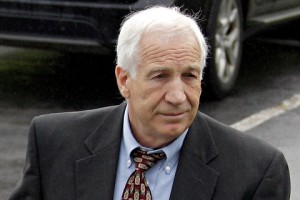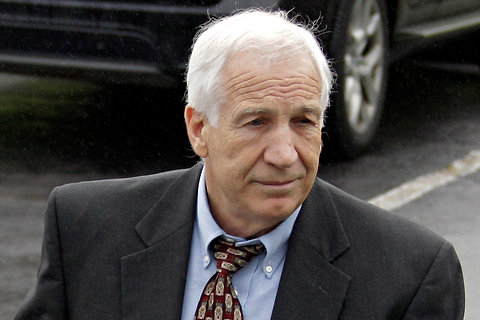 The Jerry Sandusky sexual abuse case has shone a harsh light on the limitations of the child protection policies put in place by youth-serving organizations. Sandusky, who served for years under Joe Paterno as Penn State’s assistant football coach, is currently on trial, facing 52 counts of sexually abusing young boys.
The Jerry Sandusky sexual abuse case has shone a harsh light on the limitations of the child protection policies put in place by youth-serving organizations. Sandusky, who served for years under Joe Paterno as Penn State’s assistant football coach, is currently on trial, facing 52 counts of sexually abusing young boys.
“Based on our 12 years of working with youth-serving organizations, it’s clear that most aren’t doing enough,” said Cindy McElhinney, director of programs for Darkness to Light, a national nonprofit dedicated to preventing child abuse. “And this is evidenced by the stories playing out in the media right now, including the Sandusky case. Some organizations take it very seriously and are doing a great job, but many still act like it won’t happen to them, that the children they serve aren’t vulnerable.”
A state-of-the-art abuse prevention policy is not only critical to protecting the youth you serve, but also your organization from liability, McElhinney said. “Unfortunately, in addition to having that ‘not me’ attitude, many youth-serving organizations lack the information and know-how to put together an aggressive, comprehensive, zero-tolerance policy,” she said.
The following are six keys for crafting a sound child protection policy, according to McElhinney and other experts Youth Today spoke to:
1. Make protection your prime concern.
Keeping the youth you serve safe should be your No. 1 priority, no matter what your organization’s driving mission is, said Les Nichols, national vice president of club and child safety for the Boys & Girls Clubs of America. “Detecting and preventing child molesters from gaining access to children is a tough, demanding, full-time challenge that requires unwavering diligence and commitment,” Nichols said. “Molesters don’t fit into a convenient stereotype and everyone —administrators, employees, volunteers, parents and even the children themselves — must be taught to have the courage to speak out if something seems wrong or out-of-place and to follow-through by reporting it to the appropriate authority.”
Making your commitment to child protection known to potential employees and volunteers will help to scare away would-be perpetrators. “Pedophiles and child molesters look for organizations where polices are lax,” McElhinney said. “A strong commitment and strict policies presents a considerable barrier and limits their access to children.”
2. Give every adult a background check -- and not just when they join.
It’s standard industry practice for youth-serving organizations to check the criminal backgrounds and references of employees and volunteers, and screen out those with a history of violence or abuse. However, your protection policy should not stop there.
“We do not make exceptions for people known to our organization,” said Amy Charles, associate director of Mission Kids, a Pennsylvania-based child advocacy center. “All of our vendors who visit our center, such as the cleaning service, copy machine repair staff and I/T support, also must undergo criminal background checks before being permitted entry.”
And the background checks shouldn’t be a one-time occurrence. Many organizations such as Mission Kids conduct background checks every few years or so. Some do even more.
“Every Boys & Girls Club professional and volunteer who has direct access to children is required to undergo a thorough background check every year, meeting or exceeding industry standards,” Nichols said.
3. Limit (or prohibit) one adult/one child interactions.
“Grooming is a systematic attempt by a pedophile or molester to establish friendships, develop trust and solidify relationships with children,” said Dr. Michael Ian Rothenberg, clinical director and founder of the Center for Counseling and Sexual Health of Winter Park, Fla. And grooming almost always happens when the adult has opportunities to give gifts, time and attention while slowly increasing the level of both physical and sexual contact with vulnerable youth, Rothenberg said.
“If you reduce one-on-one interactions between adults and children, you greatly reduce risk,” McElhinney said. “More than 80 percent of sexual abuse occurs in one-adult/one-child situations.”
If one-on-one interactions are necessary, McElhinney said, they should always be at a time and place that is observable and interruptible by others in your organization.
Prohibiting adult access to youth outside of your organization and its programs is also critical.
“Child abuse by an employee or volunteer of a youth-serving organization usually won’t happen at your facility or during one of your activities, but rather offsite and after hours,” McElhinney said. “It may seem innocent to allow an employee or volunteer to do something as basic as driving a child home, but you can’t open that door of opportunity no matter the circumstances. There’s always a safer, better way to do it. And it should be clearly spelled out in your policies.”
4.Train your staff to spot behavioral red flags.
As an expert on the grooming behaviors of child predators, Rothenberg believes that everyone in a youth-serving organization should keep their eyes open to what can appear to be an unusual interest in a child.
“This includes the people that we know and, seemingly, trust,” Rothenberg said.
Perhaps the biggest red flag is inappropriate touching -- which could include tickling, lapsitting, horseplay and even hugs.
“It’s often difficult to identify what is inappropriate,” McElhinney said. “And that’s why it’s important to have rules for touching clearly written down for all your adults to read and understand.”
Giving preferential treatment to a child is another, more subtle behavior that is often used by child abusers.
“Offering gifts, keeping secrets and actively seeking one-on-one time is cause for alarm,” McElhinney said.
Sometimes, predators may try to build trust with youth, especially teens, by treating them like adults.
“They may expose them to explicit language, dirty jokes, alcohol and even pornographic material,” McElhinney said.
It’s also important to closely watch the children in your programs that may be the most vulnerable and isolated, added Rothenberg. They are the ones who will likely be targeted for sexual abuse and molestation.
5. Make the incident reporting process clear.
If you have set very clear and strict rules about what behaviors and actions aren’t allowed, it should be very easy for an organization’s staff to report violations, McElhinney said. “Ideally, there should be no gray areas and zero-tolerance for breaking these important rules that protect the youth you serve.”
But it’s also vital for your organization’s staff to have a clear understanding of who they can talk to about their concerns and suspicions, said Lisa Friel, vice president, sexual misconduct consulting and investigations at T&M Protection Resources.
“Ideally, there should be more than one avenue for reporting concerns and suspicions,” Friel said. “We hear all too often that employees are not comfortable sharing such matters with the person designated, and for a variety of reasons – one of the most prevalent being that the person they are to report to is friends with or close to the person being reported.”
Mission Kids’ Charles agrees. “It’s important to create an environment in which your employees and volunteers feel comfortable raising questions and concerns,” she said. “It reduces barriers to coming forward, reporting and being proactive about preventing and responding to child sexual abuse.”
6. Communicate your policies to employees, volunteers, parents and youth.
“All adults who work with youth should undergo rigorous training about healthy relationships with children, the policies that a youth serving organization has in place and about reporting anything that seems strange, unusual or just plain unsettling,” Charles said.
Unfortunately, parents and their kids that they entrust to you are often left out of the loop, McElhinney said. “Parents need to know about your commitment to protecting their children, and they also need to play a role in your organization’s efforts to prevent sexual abuse,” she said. “The youth you serve need to not only know the rules that they need to follow, but also why. After all, a potential perpetrator is far less likely to abuse a child who is confident and aware.”
RESOURCES
The Centers for Disease Control, in collaboration with groups such as Darkness to Light and the Boys and Girls Club of America, has put together a comprehensive guide to help youth-serving organizations start building policies and procedures for preventing child sexual abuse. It’s available for free online.
Photo by Daily of the Day

Only 4% of Child Sexual Abusers have a criminal record that will show up on a criminal background check, The Diana Screen® identifies an estimated 50% of the men and women who should not be placed into positions of trust with children because they present a sexual risk: either because they have already sexually abused a child or they have a very weak understanding of the strict sexual boundaries required between adults and children.
http://www.dianascreen.com